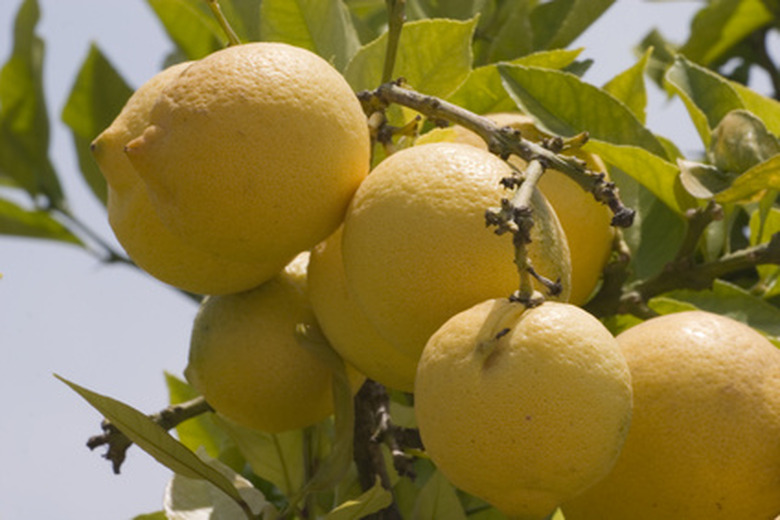The Root System Of A Lemon Tree
The origin of the lemon, or Citrus limon, tree is unknown. In 1493 Christopher Columbus is said to have brought lemon seeds to Hispaniola. It is quite possible that the Spaniards introduced the lemon to St. Augustine, Florida. According to the University of Florida, "Citrus tree growth and productivity is closely linked with root system health and both can be seriously affected by different soil borne pests and diseases." So, the root system of the lemon tree is very important.
Characteristics of the Root System
The root system is made up of woody lateral roots, which radiate out from the trunk of the tree. Fibrous roots grow from this network of lateral roots. Not only do the roots anchor/support the tree, they transport the required water and nutrients so that the tree can grow and produce fruit. The fibrous roots are the main site of water/nutrient transport. Most trees have a taproot, but this may not be present in a mature lemon tree.
- The origin of the lemon, or Citrus limon, tree is unknown.
- The fibrous roots are the main site of water/nutrient transport.
Root Growth
The environment plays a key role in lemon tree root growth. Both soil temperature and moisture are very important. During the months of February through early December, root growth of the lemon tree is periodic (roots do not grow during shoot flush). In spring, summer and fall, root growth alternates with shoot growth. The University of Florida states, "This alternation of growth is thought to occur as a result of competition between roots and shoots for photosynthetic carbohydrates."
Root Loss
The new root growth increases the root system of the lemon tree. In some instances, the new roots replace dead ones. Fibrous roots are shed throughout the year as well. Fibrous roots can die because of flooded soil or poor aeration.
- The environment plays a key role in lemon tree root growth.
- In spring, summer and fall, root growth alternates with shoot growth.
Soil Pests
The same soil temperatures that are conducive to root growth are also conducive to nematode and fungal development (citrus nematode and phytopthora). This generally occurs in April through May and October through November. Nematodes do not kill a lemon tree but they will reduce the growth of the tree, affect the number of lemons produced and reduce the tree's vigor. As the nematodes damage the roots, you will notice a thinner canopy on the tree and twig dieback. Soil and root samples should be taken to determine if you have a problem with nematodes. You cannot get rid of nematodes. One solution to this problem is to plant rootstock that is resistant, such as Milam lemon.
- The same soil temperatures that are conducive to root growth are also conducive to nematode and fungal development (citrus nematode and phytopthora).
- As the nematodes damage the roots, you will notice a thinner canopy on the tree and twig dieback.
Citrus Phytopthora Root Rot
Disease symptoms are similar to an infestation of citrus nematodes. This disease will destroy the feeder roots. Once the feeder roots are destroyed, the tree is unable to take in water and nutrients and the tree will eventually die. It is best to plant rootstock that is resistant to citrus phytopthora root rot. According to the University of California Statewide Integrated Pest Management Program, "Management of phytophthora root rot involves the use of resistant rootstocks, irrigation management, fungicides and fumigation."
